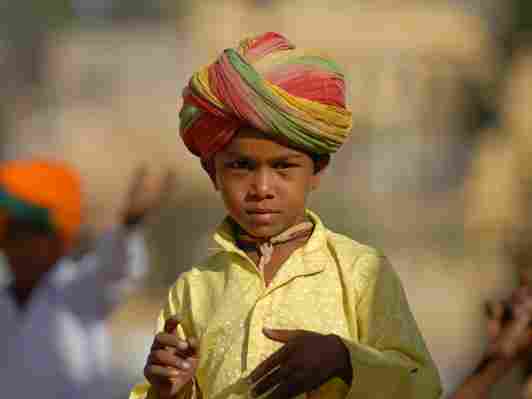A dastaar is a type of turban , or wrapped head covering, worn by all practicing Sikh men and some Sikh women. Dastaars are a required piece of clothing for Sikh men, optional for women, and an essential element of Sikh identity and heritage .

Dastaars alone are an important part of religious faith and worn by Sikhs as a commitment to equality and justice. They are also worn to cover a Sikh’s uncut hair, a practice known as kesh .
Dastaars were made mandatory for all Sikh men in the 17th century. Prior to this, the turban was an elite cultural symbol of dignity and self-worth throughout the Middle East, Arabia, and Persia, as well as the Indian Subcontinent , where Sikhism developed. The dastaar allowed all Sikhs, regardless of their social or economic status, to express the sense of pride and nobility associated with turbans.
Neither the Sikh holy canon, the Guru Granth Sahib, nor any Sikh leaders specify what a dastaar should look like. As a result, there is a wide range of styles, varying by color, length of material, or way the material is wrapped. Some Sikhs, especially young boys, wear a simple piece of fabric over their tied-up hair, called a patka .
Kesh is a more complex and fundamental part of Sikh identity. All practicing Sikhs are forbidden to cut their hair, as a sign of dedication and discipline . A dastaar helps keep an adult Sikh’s long hair clean and managed throughout the day.
Hats or helmets are not permitted to cover dastaars, and this can make the practice of wearing dastaars controversial . Read through the “Fast Facts” in the following tab for examples of how five nations have addressed legal issues surrounding the wearing of dastaars.
Teaching Strategies
Teaching about religion can be difficult. Charles Haynes, director of the Religious Freedom Education Project at the First Amendment Center, encourages educators to remember the “’Three Rs’ of religious liberty:”
Rights : “Religious liberty, or freedom of conscience, is a basic and inalienable right founded on the inviolable dignity of the person. In a society as religiously diverse as the United States, it is essential that schools emphasize that the rights guaranteed by the Constitution are for citizens of all faiths and none.” Responsibilities : “Religious liberty is not only a universal right, but it also depends upon a universal responsibility to respect that right for others, treating others as we ourselves desire to be treated. All citizens must recognize the inseparable link between the preservation of their own constitutional rights and their responsibility as citizens to defend those rights for all others.” Respect : “Debate and disagreement are vital to classroom discussion and a key element of preparation for citizenship in a democracy. Yet, if we are to live with our differences, particularly our religious differences, how we debate, and not only what we debate, is critical. At the heart of good citizenship is a strong commitment to the civic values that enable people with diverse religious and philosophical perspectives to treat one another with respect and civility.”
These “Three Rs” can be useful when teaching about dastaars, clothing, and civil rights:
Is there a dress code at your school? If there is a dress code, how does it balance the rights of individuals with their responsibilities to civic society? A dastaar is a very visible expression of religious conviction. What are some other public expressions of religious or atheistic identity? (Answers might be jewelry with religious significance, such as crosses; restricted diets, such as kosher or halal; or women wearing head coverings associated with hijab, a Muslim concept of modesty.) Do you think dastaars or other expressions of religious identity are discussed with respect in your community? How could community members increase respect in the discussion? (Answers may include a suggestion to spend informal time, such as meals, with members of a different faith or atheists; classroom education about public expressions of faith or atheism; or engaging in an art, such as a style of music, associated with a religion or spiritual movement.)
